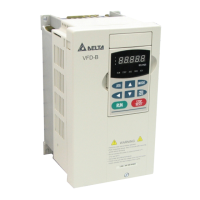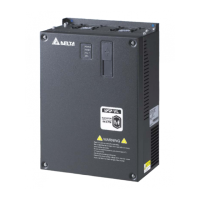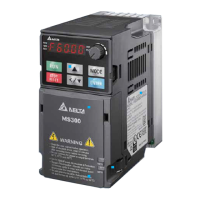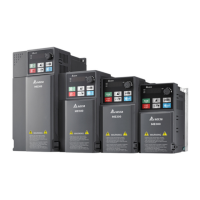Chapter 15 Maintenance and TroubleshootingVFD-ED
The AC motor drive has various warnings and protections against errors such as over-voltage, low
voltage, or over-current. Once an error occurs, the protections activate, the AC motor drive stops output,
activates the error contacts, and the motor coasts to stop. Please refer to the warning/fault display from
the AC motor drive and look up the corresponding causes / corrective actions in Chapter 13 Warning
Codes and Chapter 14 Fault Codes. The fault record is stored in the AC motor drive internal memory and
can store the six most recent error messages. You can read it from the digital keypad or through the
communications by accessing the parameters.
The AC motor drive includes a large number of electronic components, including ICs, resistors,
capacitors, transistors, cooling fans and relays. These components do not last forever. Even under
normal circumstances, they will eventually become error-prone if used past their lifespans. Therefore,
you must perform periodic preventive maintenance to identify defective and worn out parts, and eliminate
the causes of malfunctions in the AC motor drive at an early stage. At the same time, parts that have
exceeded their product life should be replaced whenever possible to ensure safe operation.
Visual checks should be done regularly to monitor the AC motor drives operation, and to make sure
nothing unusual happens. Check the situations listed in the following table.
Wait five seconds after a fault has been cleared before pressing RESET with the
input terminal keypad.
The drive must first be switched off for at least five minutes for ≤ 22 kW models, and
10 minutes for ≥ 30kW models until the charging indicator turns off, and the voltage
between terminals ○
+
– ○
-
must be lower than 25 V
DC
before it is safe to open the
cover to begin maintenance operations.
Only qualified personnel can work on maintenance or replace parts. (Remove metal
items such as watch, rings, and other metal items before operation, and use only
insulated tools.)
Never modify internal components or wiring.
The performance and the surrounding environment should meet the standard
specifications. There should be no abnormal noise, vibration, or odor.
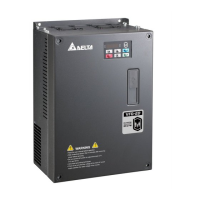
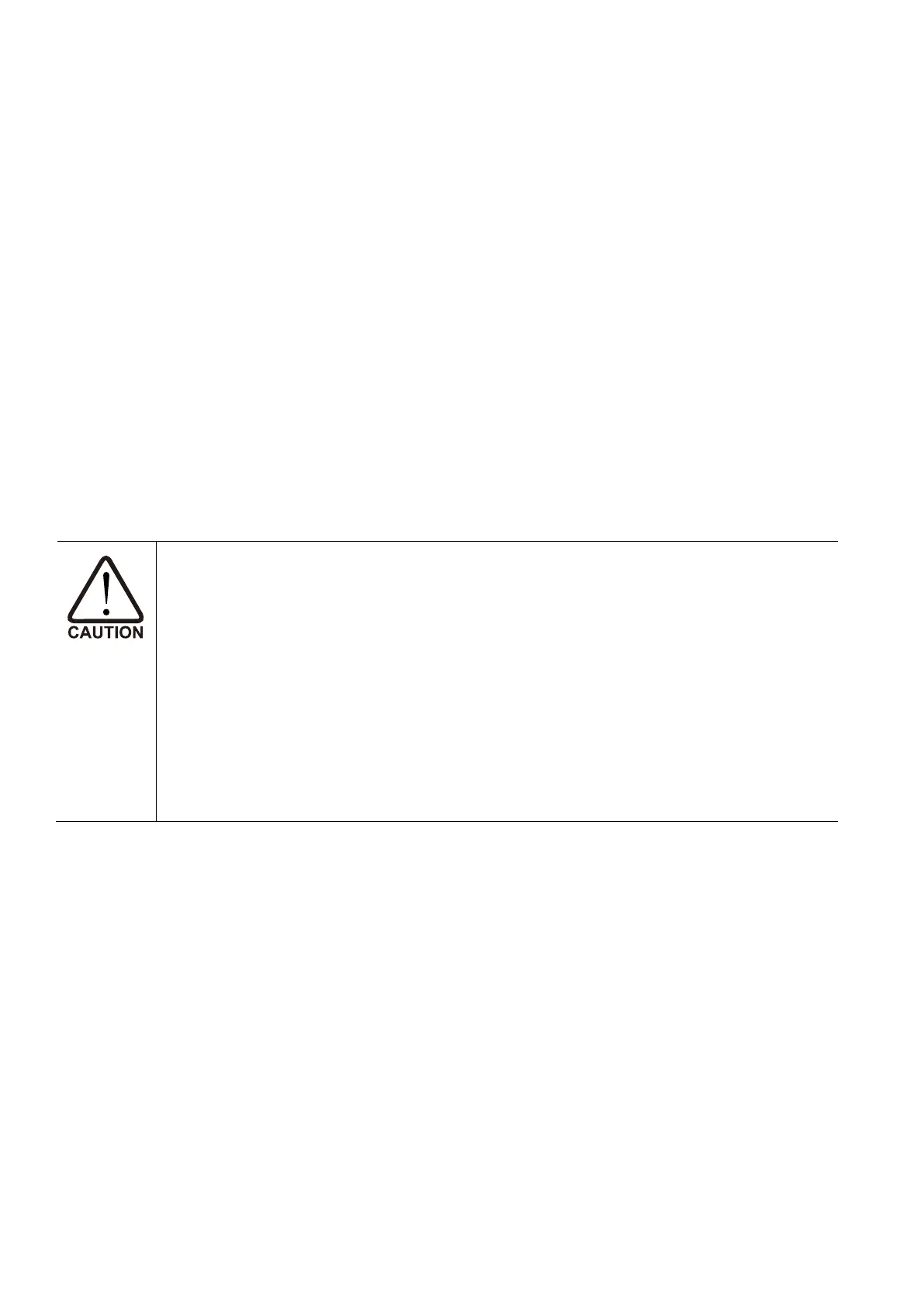